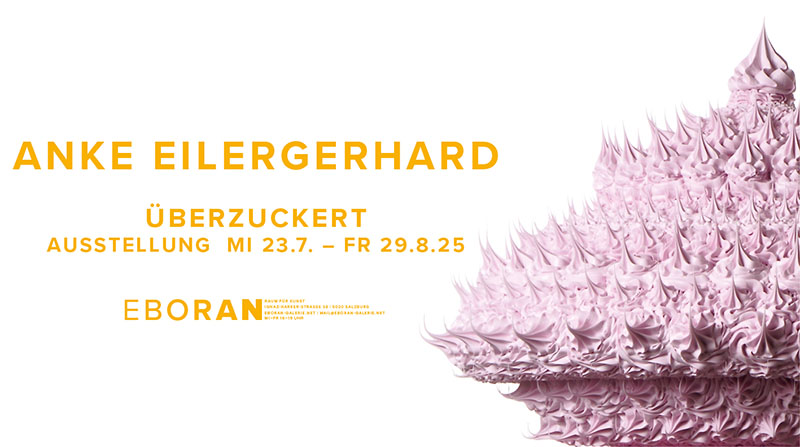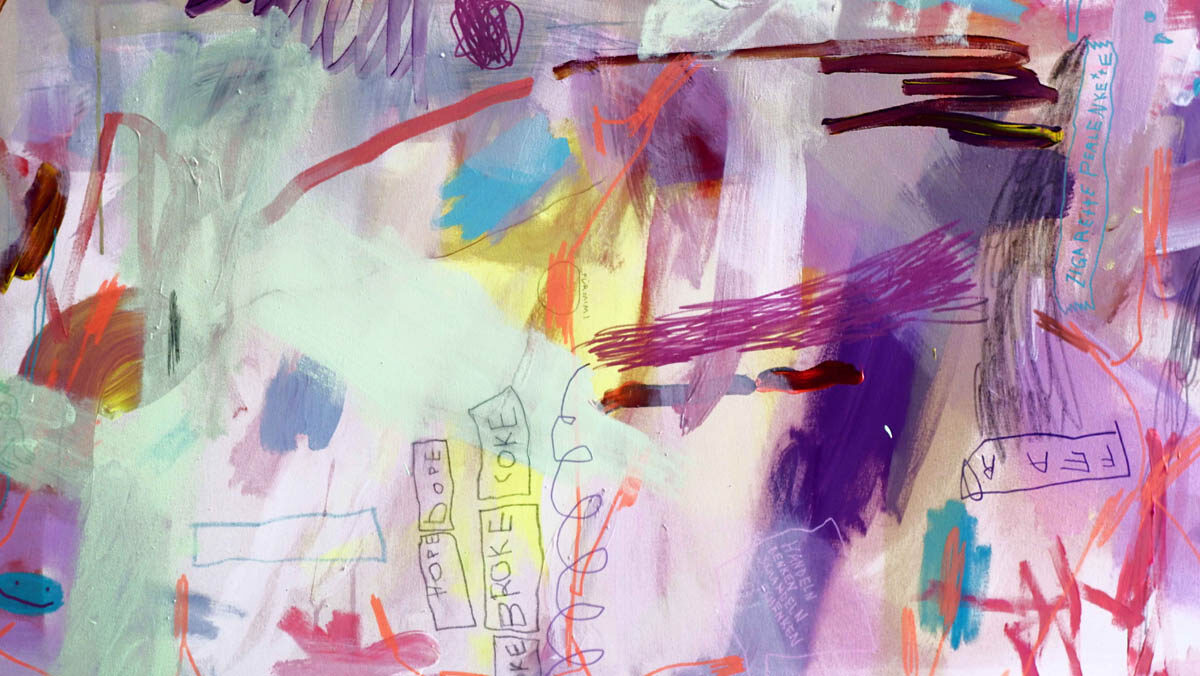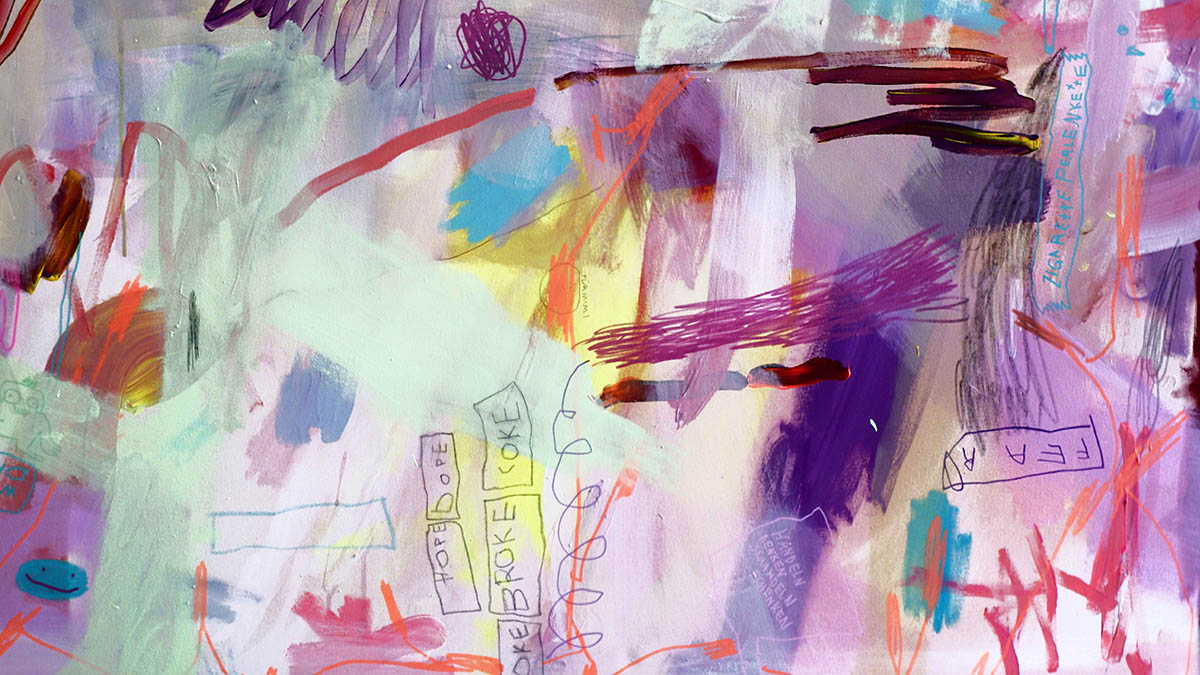
Wie haben sich deine künstlerischen Arbeiten seit unserem letzten Interview im Jahr 2021 weiterentwickelt
Meine Arbeit hat sich sehr verändert. Die Farben sind weniger knallig, ich bin konzentrierter geworden, ich habe es geschafft, das Malen und Zeichnen zu vereinen. Früher habe ich das immer getrennt voneinander gemacht. Jetzt gelingt mir ein gutes Zusammenspiel. Ich habe immer das Gefühl, „Jetzt bin ich angekommen“, aber der Prozess scheint wohl ein Leben lang zu dauern, und das Gefühl des Ankommens wird wieder zum Losfliegen.
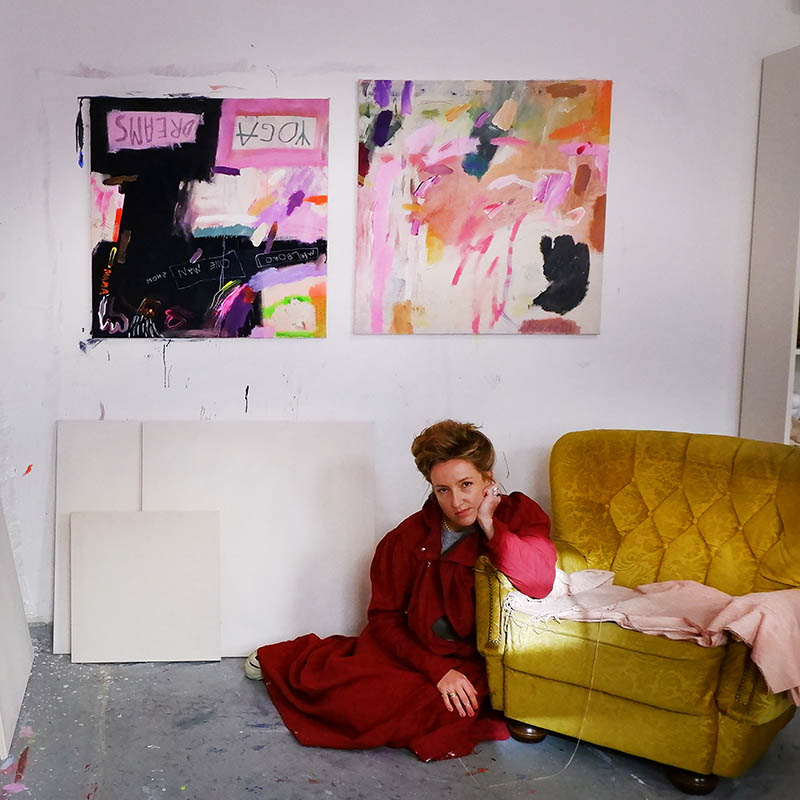
Gibt es bestimmte Themen oder Techniken, die du für dich erkundigt hast?
Ganz frisch entdeckt habe ich mit den Fingern malen. Das ist aus einer inneren Hitze entstanden und hat sich als Lösung für sehr viele malerische Konflikte herausgestellt.
Inwiefern spiegeln deine Werke die gesellschaftlichen Veränderungen wider?
Man befindet sich mitten in der Welt und ist daher bereits von Natur aus mit allem um einen herum verbunden und reflektiert, selbst ohne dies bewusst anzustreben.Ich denke gar nicht so bewusst darüber nach, aber am Ende sind die Bilder und vor allem Texte immer sehr aktuell und beschreiben einen momentanen Zustand oder Eindruck.
Wie siehst du die Verbindung zwischen Kunst und persönlichem Wachstum?
Ich sehe das als eine komplette Einheit. Wenn ich reifer werde, spüre ich das auch in der Kunst. Wenn ich ungeduldig oder unglücklich bin, dann sind meine Ideen und Gedanken die Rettung. Nach einem wilden Maltag bin ich nachher psychisch total erschöpft und ruhig, auf eine sehr angenehme Art und Weise.
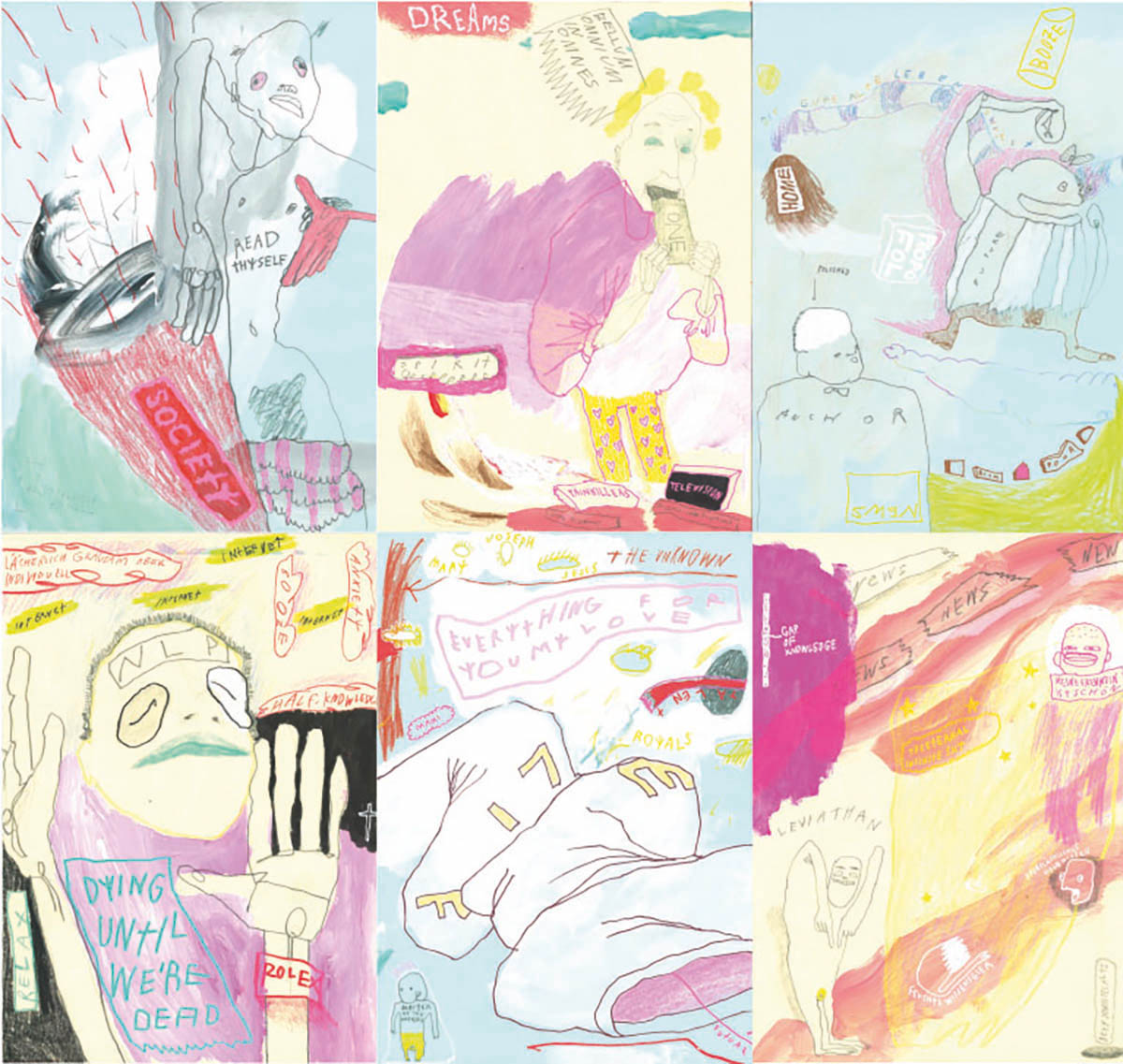
Welche aktuellen gesellschaftlichen Themen sind für dich besonders relevant und inspirierend?
Hauptsächlich bin ich einfach total überwältigt von der Gesamtheit der Ereignisse und Emotionen auf dieser Welt. Ich brenne für die Natur und Bäume, das Allergrößte für mich. Ich finde es absolut faszinierend, dass ich mit einer Freundin am Telefon über die Bomben rede, die gerade in ihrer Stadt eingeschlagen haben, während ich in Athen am „Little Cook“ vorbei gehe und dieser Ort an Kitsch, Überfülltheit und buntem Schnickschnack nicht zu überbieten ist. Der frühere OMV Chef hieß Rainer Seele! Diese Gegensätze sind doch der Wahnsinn! Und alles findet andauernd parallel auf einem einzigen Planeten statt.
Welche Emotionen oder Botschaften möchtest du vermitteln?
Ich glaube, meine Kunst muss amüsieren und Spaß machen. Wenn ich zu sehr drüber nachdenke, merke ich, dass die Arbeiten nicht gut werden. Es muss eine gewisse Leichtigkeit mitschwingen. Mit den Texten bekommt das Ganze dann eine tiefere Bedeutung. Humor ist wichtig. Im Leben und in der Kunst.
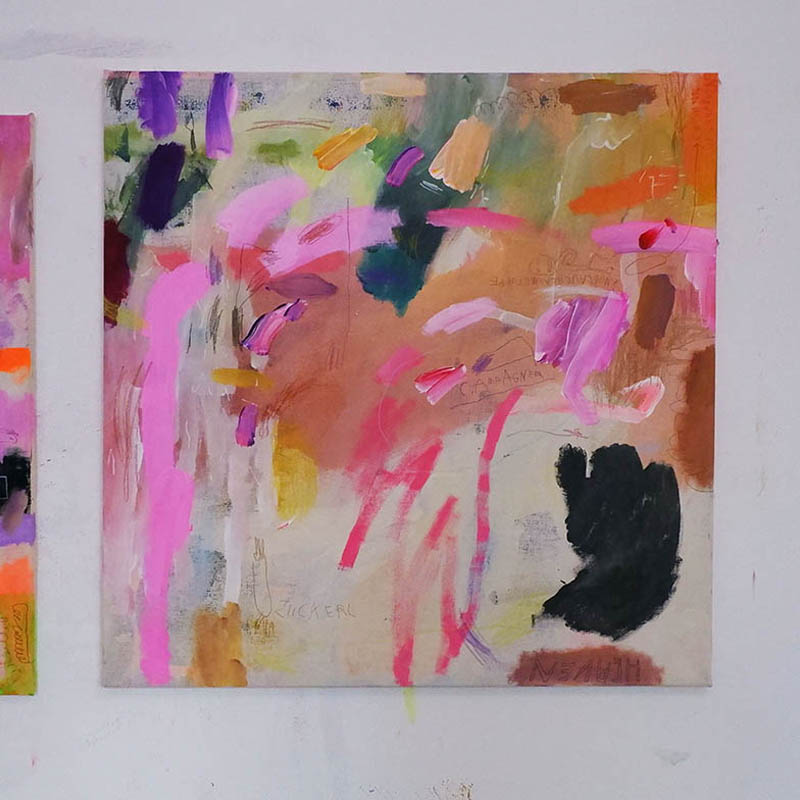
Gibt es etwas, das du den Leser:innen mit auf den Weg geben möchtest?
Kauft meine Kunst und nehmt euch ihrer an (schmunzeln)!
Woran arbeitest du? Welche zukünftigen Projekte oder Ausstellungen können wir von dir erwarten?
Ich würde sehr gerne in Athen ausstellen! Da bin ich gerade dran. Ich möchte auch gerne mehr mit Malerei und Objekten und Gegenständen machen. Wände, Stoffe, Dinge, alles bemalen! Einen Dokumentarfilm will ich auch mal machen. Dieser Wunsch springt immer wieder aus meinem Herzen heraus!
cruella bobo – www.cruellabobo.com, www.instagram.com/cruellabobo/
cruella bobo is an artist who reflects on the abysses, absurdities, and bliss of this world with a childlike, painterly hand. The contents of the drawings and paintings range from profound philosophical thoughts to memories of casual conversations at a sausage stand. She works intuitively and thoughtfully with rough color surfaces, witty-cynical text, and detailed drawings.
How has your artistic work evolved since our last interview in 2021?
My work has undergone significant changes. The colors are less gaudy, I’ve become more focused, and I’ve managed to combine painting and drawing. Previously, I always did them separately; now, I achieve a good interplay. I often think, ‚Now I have arrived,‘ but I can’t shake the feeling that it is a process full of continual new developments.
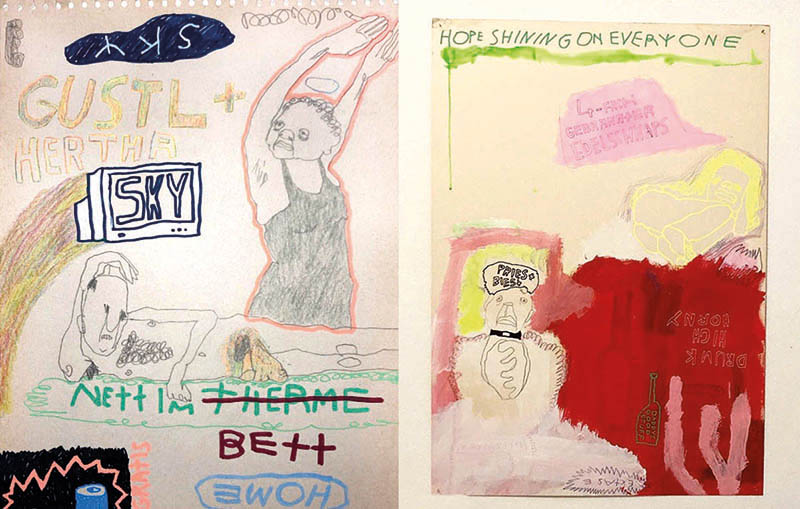
Are there any particular themes or techniques that you have explored for yourself?
Quite recently, I discovered painting with my fingers. This arose from an inner heat and has turned out to be a solution to many painterly conflicts.
To what extent do your works reflect social changes?
After all, you work in the midst of the world, so without even intending to, you are inherently a reflective being, shaping your expressions through art. I don’t even consciously think about it, but in the end, the images, and especially the texts, are always very current and describe a state.
How do you see the connection between art and personal growth?
I see it as a complete unity. When I become more mature, I also feel it in the arts. When I am impatient or unhappy, my ideas and thoughts are my salvation. After a wild day of painting, I am psychologically totally exhausted and calm, in a very pleasant way.
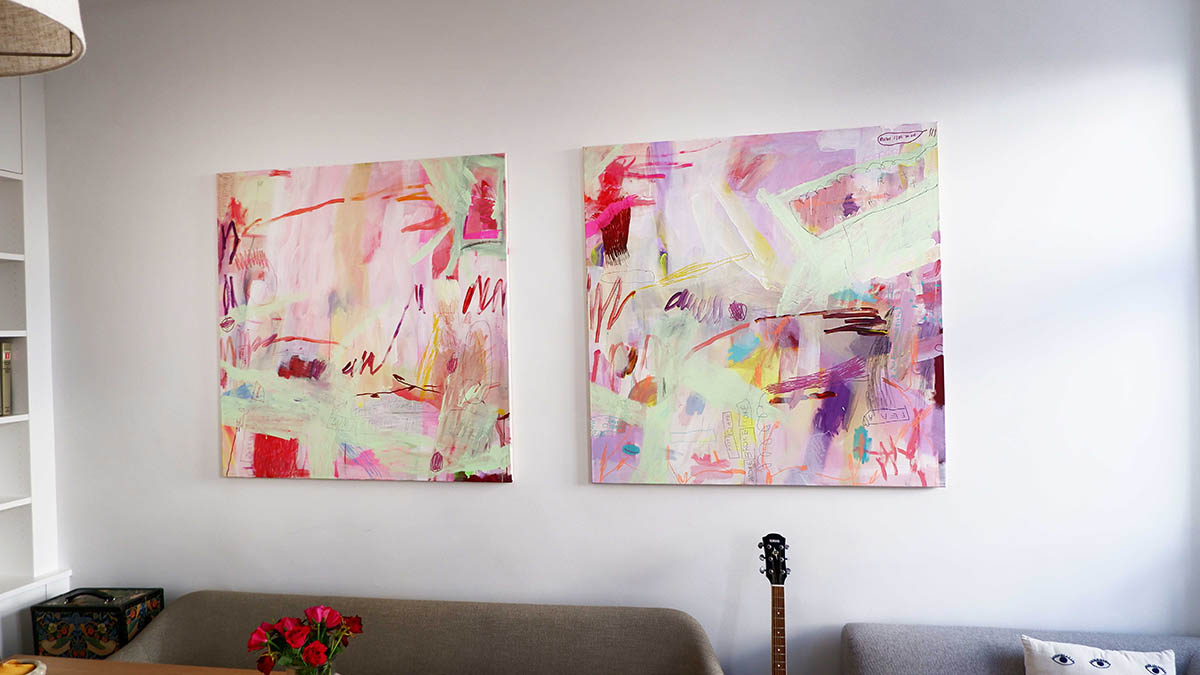
Which current social issues are particularly relevant and inspiring for you?
Mainly, I’m just totally overwhelmed by the totality of conditions and emotions in this world. I burn for nature and trees, which are the very biggest things for me. I find it absolutely fascinating that I’m talking to a friend on the phone about the bombs that just hit her city while I’m walking past the „Little Cook“ in Athens, and this place can’t be beat for kitsch, crowdedness, and colorful knickknacks. The former OMV boss‘ name was Rainer Seele! These contrasts are insane! And everything takes place continuously in parallel on a single planet.
What emotions or messages do you want to convey?
I think my art has to amuse and be fun. If I think too much about it, I realize that the work will not be good. There has to be a certain lightness. With the lyrics, the whole thing gets a deeper meaning. Humor is important. In life and in art.
Is there anything you would like to give to the readers?
No. I am not very suitable for giving tips. Buy my art and embrace it!
What are you working on? What future projects or exhibitions can we expect from you?
I would love to exhibit in Athens! I’m working on that right now. I would also like to do more with painting and objects and things. Painting walls, fabrics, things – everything! I also want to make a documentary film; this desire always jumps out of my heart!
cruella bobo – www.cruellabobo.com, www.instagram.com/cruellabobo/



